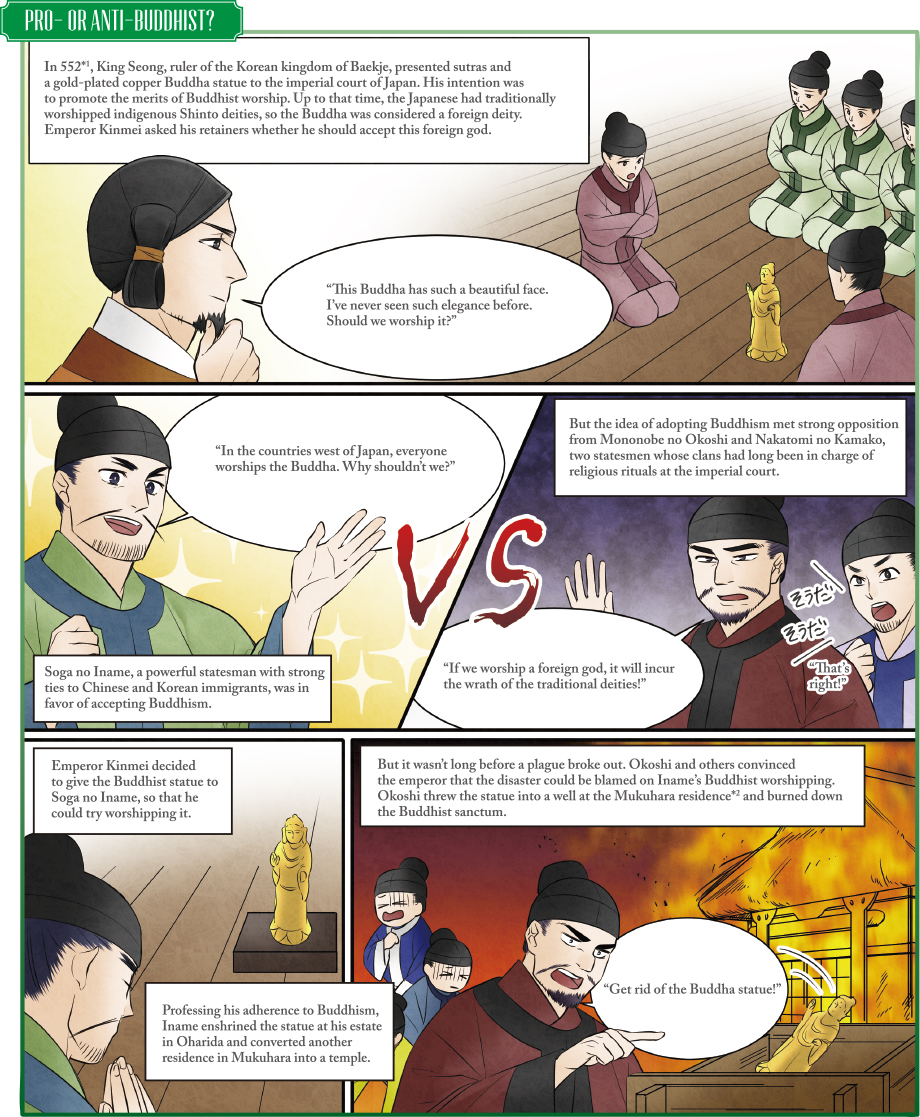Decades before Zenshin-ni’s birth, Buddhism arrives from Baekje. But the new era does not begin peacefully.
The foreign god captivates the Japanese people
“The Buddhist teachings are the most excellent of any religion.” So said King Seong of the southwest Korean kingdom of Baekje. These words extolling the virtues of Buddhism were well received by Emperor Kinmei. The emperor and his people were fascinated by the tangible presence of the Buddhist statue. Up until then, traditional Japanese deities were not represented in concrete form; rather, they were considered in the abstract as elements of nature, such as mountains, rocks, and trees, or they were thought to reside in objects such as mirrors. But now, standing before them, was a Buddha in the form of a gold-plated copper statue. The emperor was deeply impressed with the statue’s glittering appearance. His people were awed by their encounter with a culture so different from their own. From that day on, Buddhist statues would play an important role in spreading Buddhism throughout Japan.
Buddhist advocates and opponents— a struggle for supremacy?
While the Soga clan adopted Buddhism, the Mononobe clan opposed it, although recent findings reveal the distinction was not so clear-cut. The remains of a Buddhist temple were recently found among the ruins of the Mononobe clan’s estate, indicating that they may have privately followed Buddhism. The Soga clan, for their part, continued to take part in Shinto rituals. While the Mononobe and Nakatomi clans maintained power in the imperial court by overseeing ancient religious practices, the Soga clan deepened relations with Chinese and Korean immigrants and with the Korean Peninsula while also introducing new cultural elements to counterbalance the influence of the Mononobe and Nakatomi clans. One could characterize this imperial court rivalry as a battle between proand anti-Buddhist factions.

